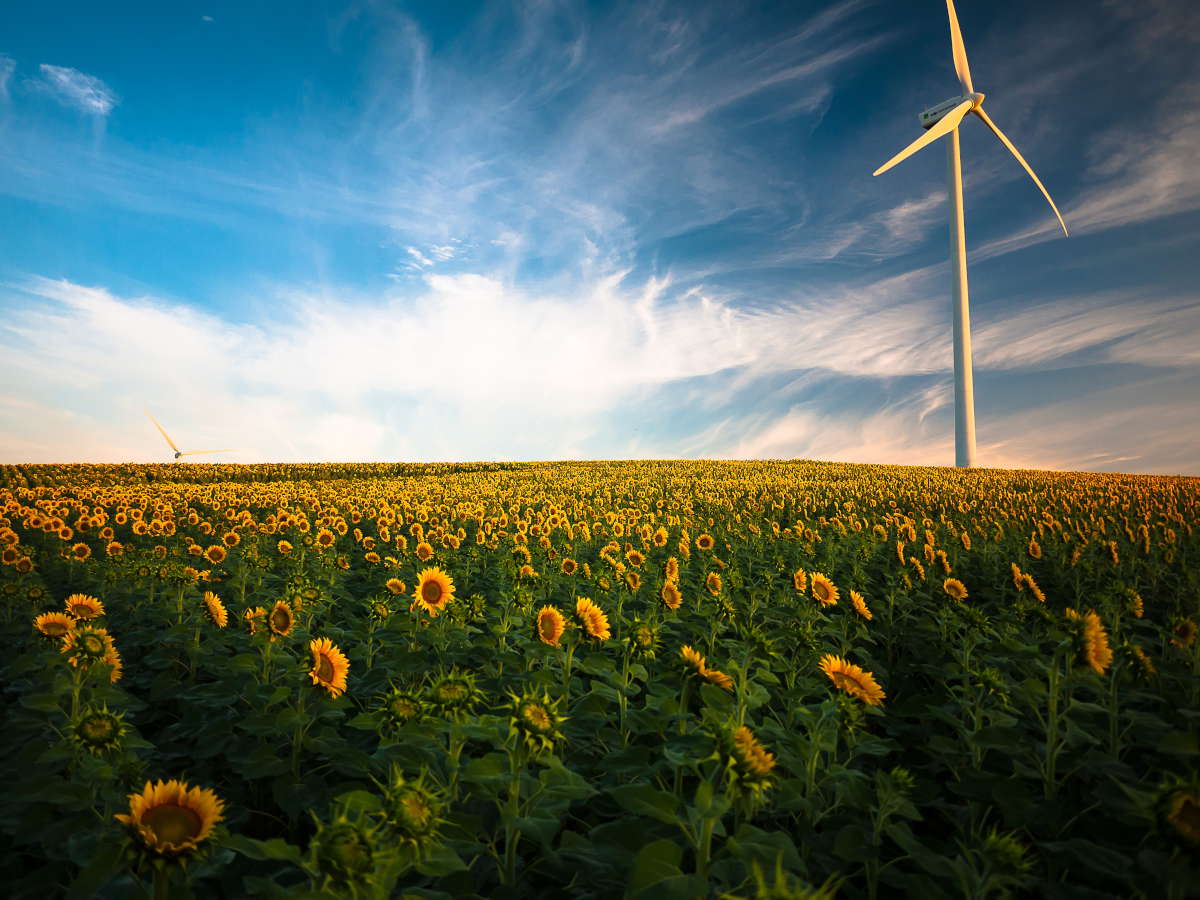“Go back to basics,” explains architect Gustavo San Juan, as he offers a tour of a building he has designed to adapt to a changing climate, and to run entirely on renewable energies.
The structure, built using environmentally friendly techniques and materials including recycled plastic bricks, will soon become the Renewable Energy Centre of Buenos Aires province.
Located in the town of Gonnet, at the edge of the city of La Plata, the centre will be the headquarters of the Provincial Programme of Incentives for Distributed Renewable Energy Generation (Proinged). This public-private management body finances projects and leads research on renewables and energy efficiency in the province.
As well as being used for research activities linked to Proinged’s work, the building itself will demonstrate innovative technologies, says San Juan, a researcher at the Research and Policy Institute of the Built Environment in La Plata.
The structure is built with bricks made from recycled polyethylene terephthalate, better known as PET – the plastic used for drinks bottles and food containers – or from mycelium, the root-like structure of a fungus. Other materials included: board made from peanut shells and agro-industrial waste; adhesives made from soy protein; and insulation from recycled expanded polystyrene and sheep’s wool. These technologies were developed by research institutes and private enterprises across Argentina that work on recycling used materials.

The Renewable Energy Centre of Buenos Aires province has been designed to adapt to the changing climate and to run entirely on renewable energy. Its architect, Gustavo San Juan, is calling for construction to “go back to basics” (Image: IIPAC)
Sheep’s wool is used for heat and sound insulation in walls, ceilings and mezzanines. “In Buenos Aires, sheep wool does not have a significant value for the textile industry, and they burn it, bury it or give it as part payment for shearing. We use this resource for insulation panels,” says Alejandra Núñez Berté, director of Project Abriga, the organisation that provided the wool for the project.
“Throughout history people warmed themselves with the sun, and it was only with oil and air conditioning that we forgot about it,” says San Juan. “Now, aware of the damage, we have to recover this knowledge with a 21st-century vision. We cannot continue to build as we did 40 years ago.”
Carbon-heavy construction in Argentina
The global buildings and construction sector contributes significantly to climate change. In 2022, it was responsible for 37% of carbon dioxide (CO2) emissions and 34% of energy demand, according to the UN Environment Programme. Much of this energy demand was for operational needs such as heating and cooling. In Argentina, the emissions figure is the same, but the sector reportedly accounts for 40% of energy consumption. Steel, cement and aluminium – all materials required in modern construction – are estimated to be responsible for 15% of global emissions. Most emissions are generated at the production stage of these materials.

The greenhouse gas emission footprints associated with widespread contemporary building conventions. Note: Operational needs include room heating and cooling, water heating, lighting, and food preparation (Data sources: World Economic Forum, IEA; illustration: Ricardo Macía Lalinde / Dialogue Earth)
In the Argentine construction industry, the use of these “traditional” materials predominates. “Construction with cement, bricks and concrete is still widely used, and other materials such as prefabricated concrete or recycled wood, which are aimed at greater efficiency in energy consumption and the use of energy for construction, are not used as much,” says Miguel Ippolito, a member of the Argentine Construction Chamber.
However, he points out that there has been an increase in “dry” construction, based on prefabricated materials that do not require the use of water and can make building more efficient and faster. Drywall – also known as plasterboard – reduces fuel consumption by 60% and carbon dioxide production by 22.5%.
For Carolina Ganem, a researcher at the Institute of Environment, Habitat and Energy of the National Scientific and Technical Research Council (Conicet) in the province of Mendoza, there is a vicious circle between the effects of climate change and how we use buildings.
“Temperatures are rising due to increased anthropogenic emissions and therefore the use of heating and cooling equipment in dwellings is increasing. This use, in turn, generates more emissions and an increase in the anthropogenic waste heat derived from them, which in turn increases the heat in cities,” she says.
Construction alternatives
When, in 2020, Ana Basso and her partner began to imagine their new home in the town of La Serranita, in the province of Córdoba, they had one thing clear: they wanted the experience of a project that was self-built.
“We wanted it to be like this not only because of economic necessity, but also because we wanted to be part of the process. From the beginning we knew it was a project that would take time,” she says.
The family moved into the house in December 2024 when the last windows and doors were installed. “The house is very cool in summer and feels warm in winter,” she says.
The La Serranita project used a timber frame as the load-bearing structure, which is then filled in using light straw clay (straw coated with a slurry of water and clay) to create walls, which are then plastered with earth.

The Argentine tradition of environmentally friendly building techniques and materials is now often referred to as bio-construction. Dialogue Earth spoke to Ana Basso, who recently moved into a newly built home that uses light straw clay walls throughout, in the town of La Serranita, Córdoba (Illustration: Ricardo Macía Lalinde / Dialogue Earth)
“The frames are spaced every 60 centimetres with small columns that distribute all the weight of the roof of the structure, and make the strength of the house more evenly distributed,” she says.
Until 2018, the use of timber frame structures was not considered common in Argentina, and required a Certificate of Technical Aptitude (CAT), an authorisation granted to innovative construction systems after being subjected to different safety tests. Since its recognition as a “traditional” system that year, this technical authorisation is no longer required.
In Argentina, architecture that uses environmentally friendly techniques and materials is known as bio-construction. For Leonardo Nucci, a bio-constructor in the Patagonia region, there is confusion between systems classified as traditional and non-traditional. “Cement or industrialised construction is often referred to as traditional, when what is traditional is bio-construction,” he says. “Cement has only been used in Argentina for a century. Only industry has been responsible for changing our collective consciousness about traditional forms of construction.”
Nucci is part of the Bioca Network, made up of inhabitants of El Bolsón, in the province of Río Negro, and the municipalities of Lago Puelo, El Hoyo and Epuyén, in the province of Chubut. The network promotes bio-construction to adapt construction systems to the cold and windy climate of Patagonia.
Although bio-construction is a sustainable and culturally rooted technique, unlike timber frames there is no national regulation to legally enable it.

A house in the southerly Patagonia region, built according to bio-construction techniques. Even though these methods are sustainable and suitable for various different climates, Argentina has yet to draw up any national regulations for them (Image: Leonardo Nucci / TierraFuego)
“In the absence of a common regulation for bio-construction at the national level, municipalities decide according to the information they have, which explains why many projects fail to obtain municipal authorisation to move forward,” says architect María Rosa Mandrini, from Red Protierra Argentina, an organisation that promotes building with earth throughout the country.
In 2021, the network published a draft ordinance to enable local governments to regulate bio-construction. This document proposes local guidelines to standardise techniques and promote good construction practices.
Mandrini explains that municipalities in 15 provinces have since approved local ordinances on bio-construction, while three provinces have passed laws relating to such methods. The breadth of these initiatives, she says, “shows the versatility of this type of construction to adapt to different climates and seismic zones”.
Energy efficiency to combat poverty
Argentina currently has a housing deficit that affects some 4 million families: about 1.6 million are reportedly homeless, and more than 2 million lack safe infrastructure. There is an urgent need for social housing.
Families in low-income sectors often self-build their homes without any technical design or focus on energy efficiency, explains Salvador Gil, a researcher at the National University of San Martín and a specialist in sustainability. “This is their home, and this must be understood as a starting point for planning any improvements,” he warns. The lack of thermal insulation in these homes increases energy demand and families resort to expensive and inefficient sources of heat, such as firewood or bottled gas, which can cost up to five times more than mains gas, and involves physical effort and transport costs.

This resident of Rosário in central Argentina heats water and cooks using firewood, an expensive and inefficient source of heat. Meanwhile, the lack of thermal insulation in homes such as this only increases energy demand (Image: Celina Mutti Lovera / Dialogue Earth)
“In these cases, addressing energy efficiency helps mitigate greenhouse gas emissions and also combats poverty. In countries like ours, that’s the key,” says Gil, highlighting the urgency of implementing efficient and affordable technologies such as LED lamps, heat pumps and electric hot pots for cooking, which would save on utility bills.
Gil suggests that energy efficiency must be accompanied by public policies and adequate social and cultural initiatives to ensure that efficient technologies are taken up. “The role of the state is important, but the role of society and its involvement seems to me to be fundamental for this transformation,” he concludes.
The role of the state
At the national level, there are regulations that promote energy efficiency and sustainable construction. For example, the IRAM 11600 series of standards provides reference guidelines for thermal conditioning and insulation, as well as energy savings in heating. However, specialists agree that the voluntary nature of the application of these regulations limits progress.
Carolina Sfeir, head of the Directorate of Energy Policy and Tariffs of the province of Buenos Aires
Ganem says what is needed are mandatory standards according to each of the country’s climatic regions, with minimum standards for thermal, energy and lighting conditions in buildings. Applying existing standards, such as IRAM 11600, could have a positive impact, she adds.
Another recent initiative is the creation in 2023 of the National Housing Labelling Programme (Pronev), promoted by the former Ministry of Energy. It assesses the degree of energy requirement that a house needs during a year to satisfy heating, cooling, domestic water heating and lighting needs.
Although it is voluntary in most of the country, some provinces such as Santa Fe have their own regulations and require energy efficiency labelling when registering a property.
The labelling considers factors such as climate, building systems, materials, openings and ventilation, and allows estimating utility costs and environmental impact. So far, 1,357 labels have been issued and 3,738 dwellings have been analysed.
Carolina Sfeir, head of the Directorate of Energy Policy and Tariffs of the province of Buenos Aires, emphasises that in order to expand the programme, it must be overseen by local and provincial governments. “There are people trained [to evaluate a house’s energy performance] all over the country and [cooperation agreements to join the programme] in different provinces, but not all new houses have to have this labelling. It is still up to the [builder] to decide whether or not to incorporate sustainability criteria in the construction,” she says.
According to Leadership in Energy and Environmental Design (LEED) certification, the world’s most widely used classification for measuring the sustainability of buildings, Brazil and Mexico lead the Latin American ranking in the construction of sustainable buildings.
Although Argentina ranks fifth among the 10 Latin American countries that qualify for LEED certification, it maintains a sustained growth and an increase in the demand for this type of housing. Such growth, along with the country’s existing regulations and range of natural resources, may just be setting the foundations for Argentina to move towards a more environmentally friendly construction industry.








.jpeg)
 English (US) ·
English (US) ·